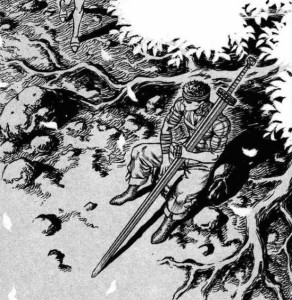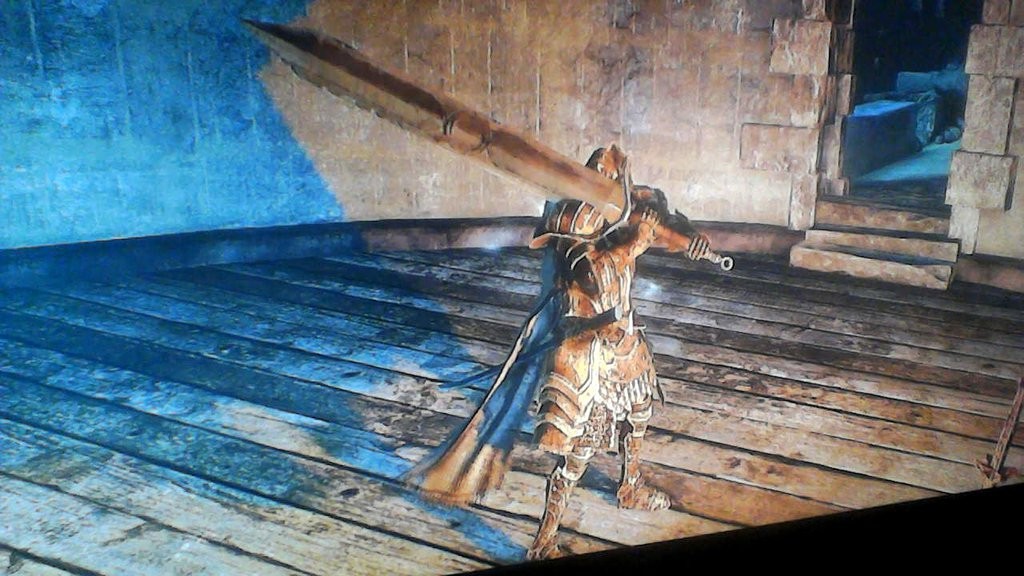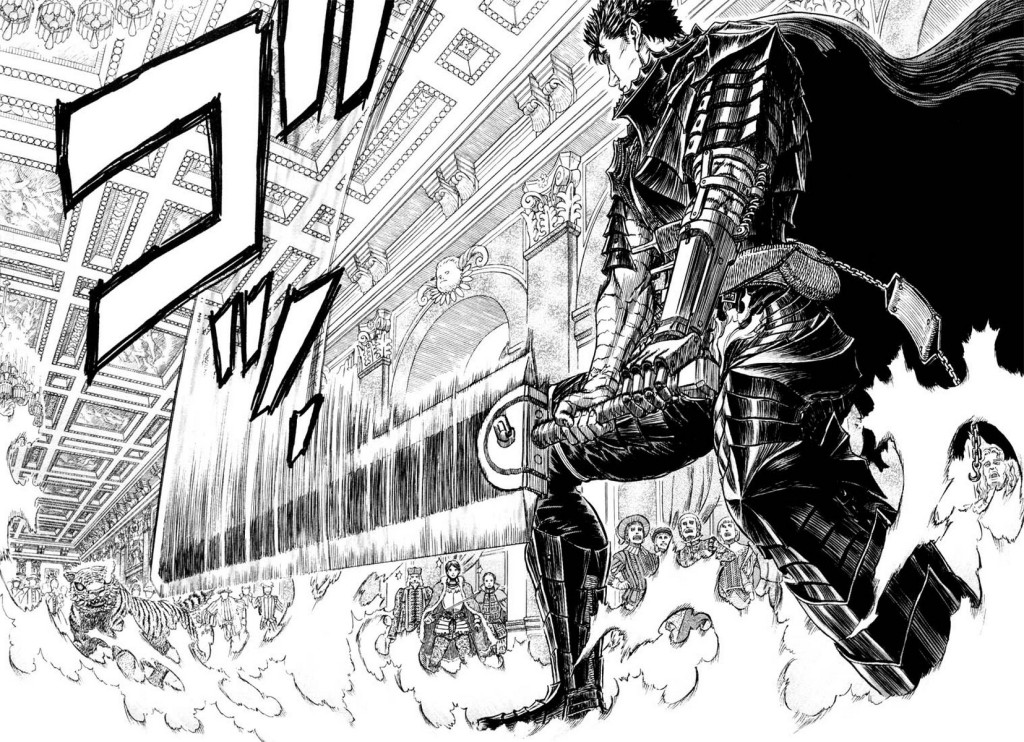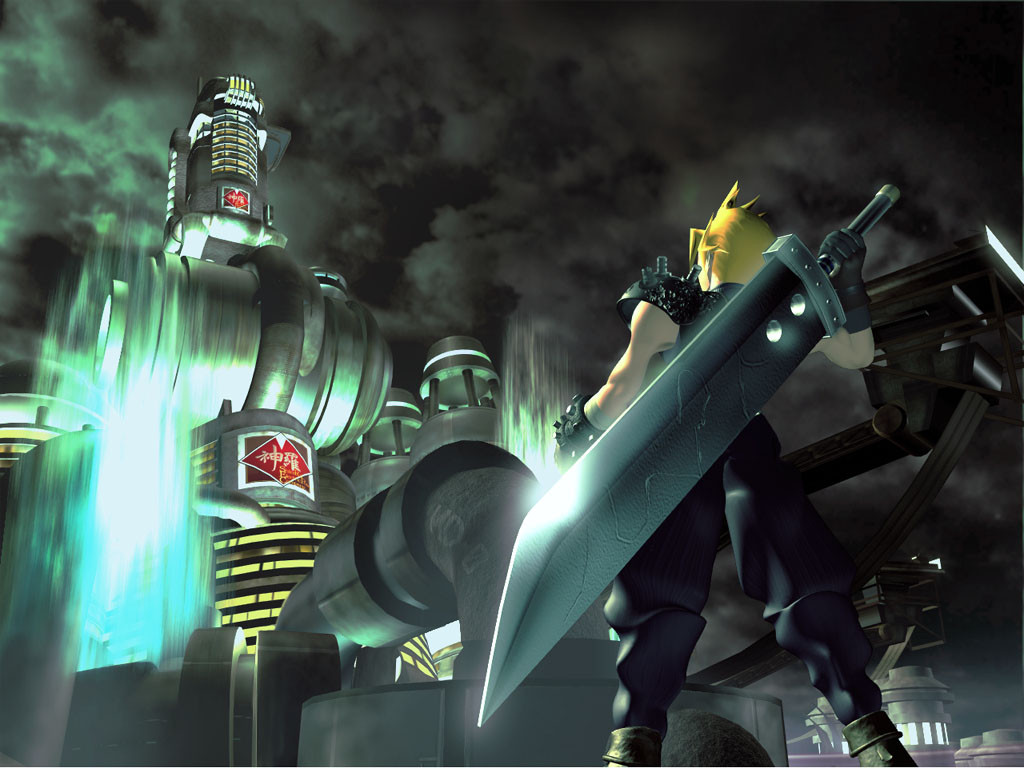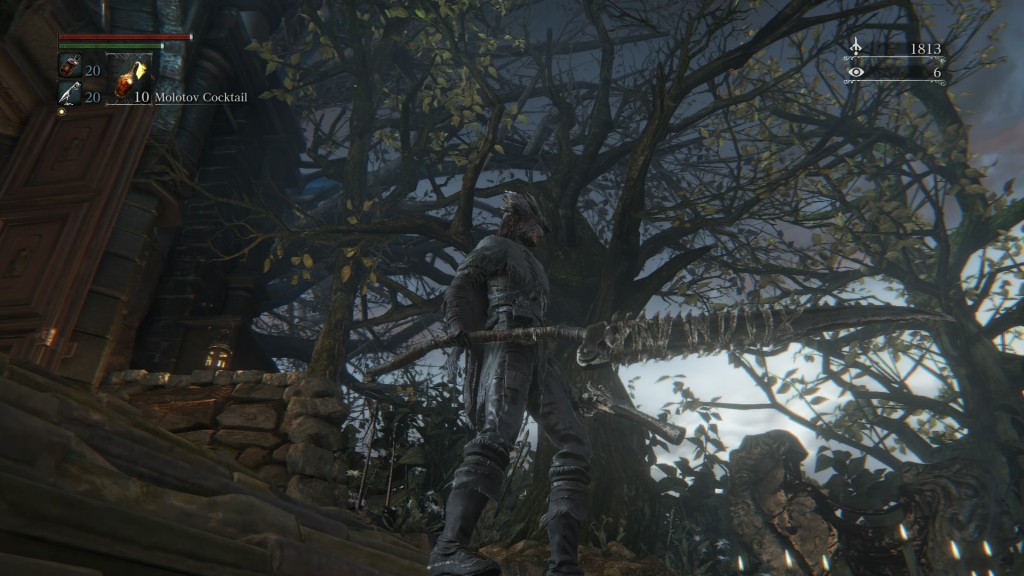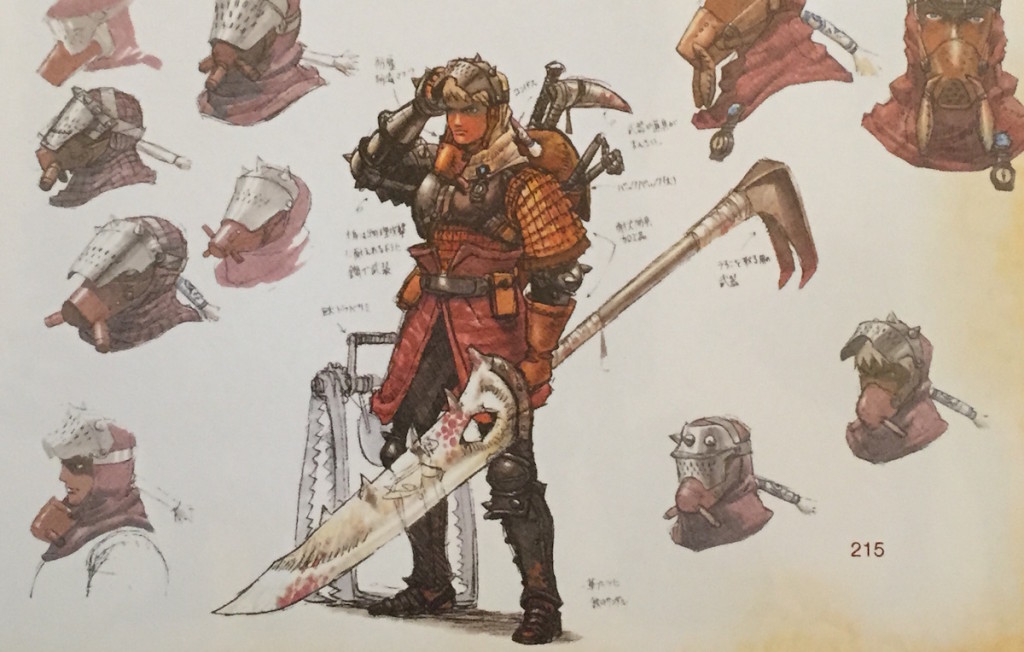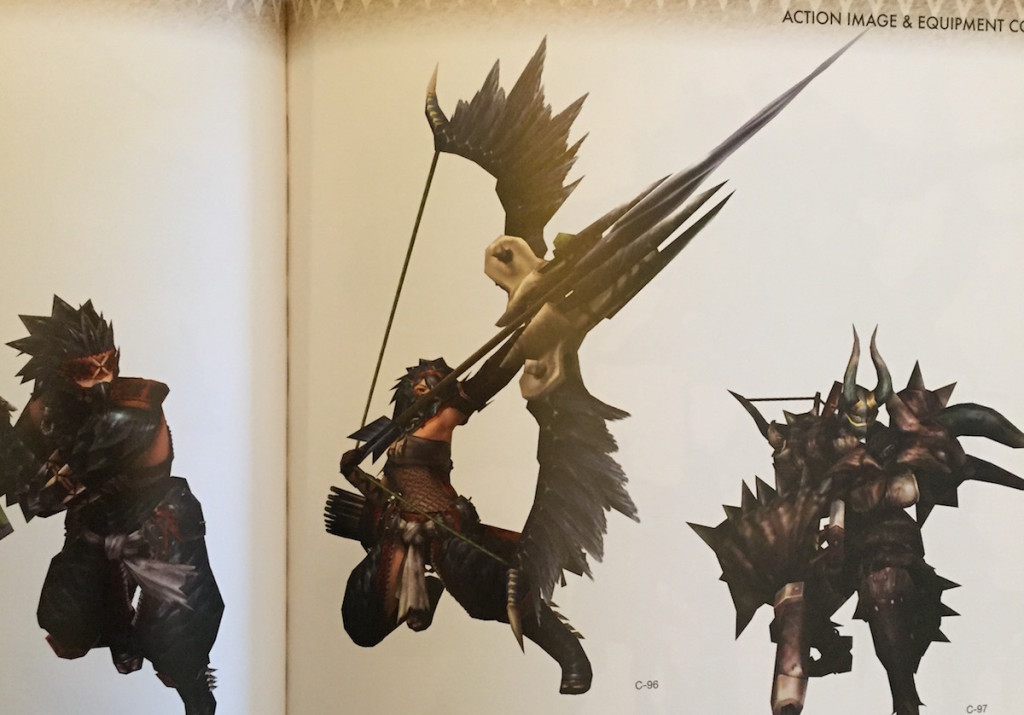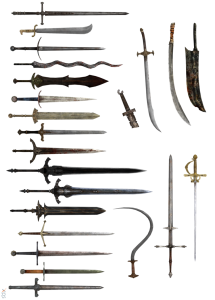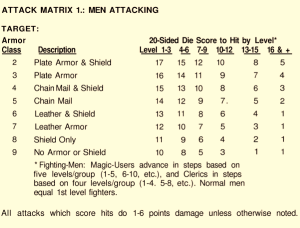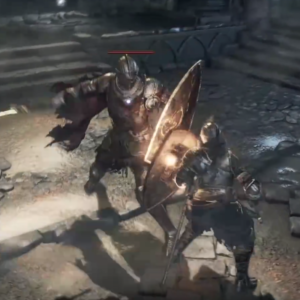
Knight blocking (image source)
Blocking and dodging are an iconic part of Dark Souls combat. While I do not want to model Dark Souls combat entirely, I do want to inject some of that feeling while maintaining the randomness necessary for engaging B/X combat and also not changing the core combat engine or making it significantly more complicated.
The Shield Block and Dodge reactions replace the monster attack roll and so must be declared prior to throwing the monster attack roll dice. When a monster attacks, the referee should say to the adventurer player (paraphrasing): the monster is attacking you, do you want to block or dodge? and then proceed with the appropriate procedure.
The approach outlined below in essence allows the player to use strength or dexterity as their defense stat, instead of armor class. This also eliminates the effect of the monster attack bonus, and so will often, especially for particularly fearsome monsters, be probabilistically advantageous. The downside is that blocking or dodging risks running out of stamina, represented by a constitution check. This trades chance of near future danger for immediate benefit.
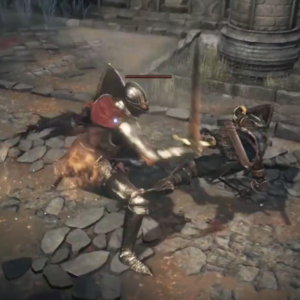
Knight dodging (image source)
Characters that are out of stamina are sluggish and do not fight as effectively. They may not block or dodge and make all physical rolls, including attack rolls and ability checks, with disadvantage.
Blocking is more effective (even when the strength check result is failure the adventurer suffers less damage) while dodging consumes an adventurer’s per-turn movement allowance.
Some attacks are difficult to block (strength check success → half damage, strength check failure → full damage) or impossible to block (suffer full damage no matter what). Players must discover which attacks are able to be blocked through play. In general, this should follow common sense; don’t try to block a giant’s club.
Reaction: Shield Block
To block an enemy’s attack, make a strength check. On success, suffer no damage. On failure, suffer half damage (round up).
Also make a constitution check to avoid running out of stamina.
Playbook cue:
Make STR check (failure → ½ damage) and CON check (failure → out of stamina).
Reaction: Dodge
To avoid an enemy’s attack, make a dexterity check. One dodge can avoid multiple enemy attacks if fictionally reasonable.
Also make a constitution check to avoid running out of stamina.
An adventurer may not move after dodging on a turn during which the adventurer dodged.
Playbook cue:
Make DEX check and CON check (failure → out of stamina). Avoids multiple attacks.
Action: Recover Stamina
To recover stamina, spend a combat action.
Playbook cue:
Spend combat action.
(2016-12-08 Edit: recovering stamina used to require a successful CON check but I think that may be too harsh.)
Condition: Out of Stamina
Make all physical rolls with disadvantage.
Blocking and dodging are impossible.
Stamina recovers automatically following combat.

